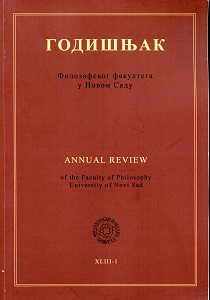КИБЕР-ПРОСТОР КАО ДИСПОЗИТИВ ДРУШТВЕНОСТИ
CYBERSPACE AS THE DISPOSITIVE OF SOCIALITY
Author(s): Dušan Ristić, Dušan MarinkovićSubject(s): Social Sciences, Sociology, Social development
Published by: Филозофски факултет, Универзитет у Новом Саду
Keywords: borders; cyberspace; dispositive; transgression; virtual reality
Summary/Abstract: In this article, the main subject of research is cyberspace as a type of social space. We proceed from a set of assumptions. The first is that cybernetic aspect is crucial – it is an artefact, a space under human control and regulation. The second assumption is that cyberspace is a plurality of spaces and not just one autonomous and indivisible space. Furthermore, we present different ways in which researchers define it in conceptual, perceptual, metaphorical, practical, technological and empirical terms. We use the metaphor of digital territory to emphasize the fact that cyberspace shares some features with physical space. It is a mediated and relational space. Our next assumption refers to the framework of the approach in media ecology. In accordance with this framework, cyberspace is defined as a type of environment that influences human perception, understanding, emotions and values. Our next assumption is about the importance of the difference between cyberspace and virtual reality. Our emphasis is on the spatial dimension of sociality in a relatively new type of environment that is produced with the technologies of communication. When it comes to virtual space, the emphasis is on its difference from physical reality. Then we proceed with the assumption that communication is also a production of space – because all forms of representation always appear in some kind of space and because all social spaces are produced – at least in one part – thanks to representations and meanings. Cyberspace is an electronic, digital and media space, but also the space of interactivity and relationality. We define it as the dispositive of sociality – it makes social interactions and relations happen, but also makes them reproduce and last. It is the space of a three-fold relationship: between humans, between man and environment and between man and objects. Furthermore, it involves the totality of events in these relationships. This way, cyberspace becomes the order of reality and the space of possibilities. In conclusion, we claim that cyberspace is articulation and materialization of the social. It means that cyberspace makes our social interactions both visible and durable.
Journal: Годишњак Филозофског факултета у Новом Саду
- Issue Year: 43/2018
- Issue No: 1
- Page Range: 387-403
- Page Count: 17
- Language: Serbian

